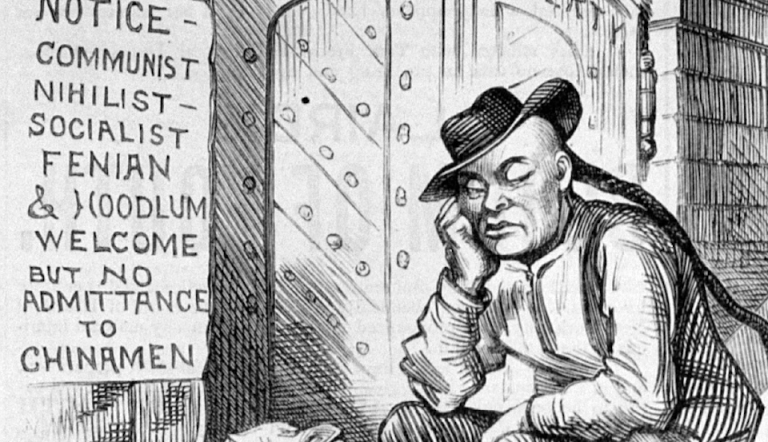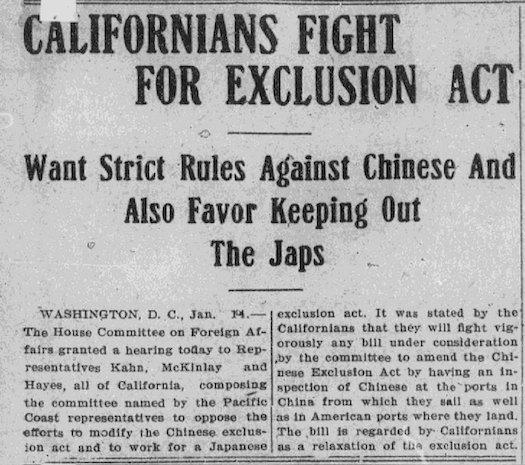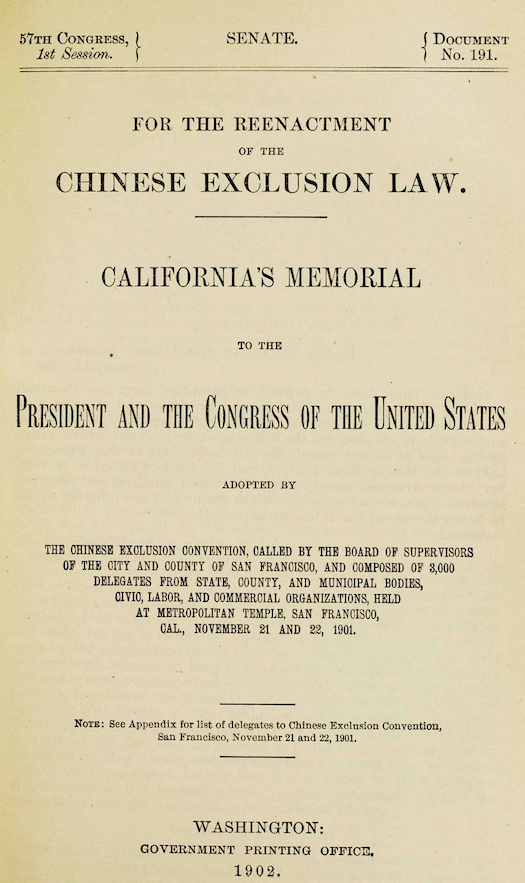
How Racial Prejudice Shaped U.S. Immigration Policy in the 19th and Early 20th Centuries
New York, N.Y.—In 1882, the U.S. Congress passed the Chinese Exclusion Act, the first federal law to explicitly bar an ethnic group from entering the country.
Chinese Exclusion in the U.S., 1848-1911

The legislation was rooted in the racist sentiment captured by the phrase, “The Caucasian will not tolerate the Mongolian,” a slogan popularized by labor leaders and politicians who framed Chinese immigrants as an economic and cultural threat.
From 1848 to 1911, anti-Chinese racism became entrenched in American society, shaping policies that reverberate today.
Gold Rush and the First Wave of Discrimination
The discovery of gold in California in 1848 lured thousands of Chinese laborers to the U.S., where they faced immediate hostility.
White miners resented competition, and state legislatures imposed discriminatory taxes, such as the Foreign Miners’ Tax of 1850, which targeted Chinese and Latin American prospectors.
By the 1860s, Chinese workers were pushed into low-wage industries like railroad construction, where they built the Transcontinental Railroad under brutal conditions. Yet, upon its completion in 1869, they were excluded from celebratory photographs—a symbolic erasure of their contributions.
Violence and the Rise of Sinophobic Rhetoric
Anti-Chinese violence peaked in the 1870s and 1880s. In Los Angeles in 1871, a mob lynched 18 Chinese immigrants in one of the worst mass killings in California’s history.

Politicians like Denis Kearney, leader of the Workingmen’s Party, stoked fears with slogans like “The Chinese Must Go!”
Newspapers depicted Chinese immigrants as diseased, immoral, and incapable of assimilation.
This rhetoric culminated in the Chinese Exclusion Act of 1882, which banned Chinese laborers for a decade and barred those already in the U.S. from citizenship.
Legal Discrimination and Resistance
The Exclusion Act was extended in 1892 with the Geary Act, which required Chinese residents to carry identification papers or face deportation.
In United States v. Wong Kim Ark (1898), the Supreme Court ruled that birthright citizenship applied to Chinese Americans, but discrimination persisted.
Chinese communities fought back through lawsuits, boycotts, and underground networks, while exclusion policies remained in place until 1943, when the U.S. repealed them amid World War II alliances.
Legacy of Exclusion in Modern Immigration
The Chinese Exclusion era set a precedent for racialized immigration policies, from the Immigration Act of 1924 to modern debates over border control.
Historians note parallels between 19th-century Sinophobia and contemporary anti-immigrant rhetoric targeting Mexican, Muslim, and African migrants.
The era remains a stark reminder of how racism can shape law and society.

Chinese Exclusion Era: “The Caucasian Will Not Tolerate the Mongolian” (July10, 2025)
Summary for Audio File
From the Gold Rush to the Chinese Exclusion Act, 19th-century America institutionalized racism against Chinese immigrants. Violent riots, discriminatory laws, and dehumanizing rhetoric defined an era that still echoes in today’s immigration debates. This feature explores how “The Caucasian will not tolerate the Mongolian” became a rallying cry for exclusion—and how resistance persisted.